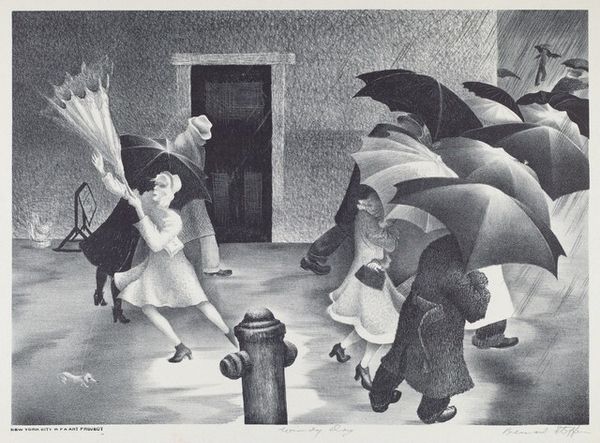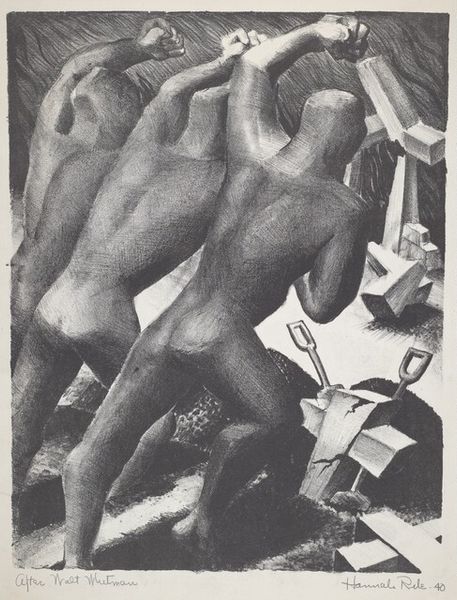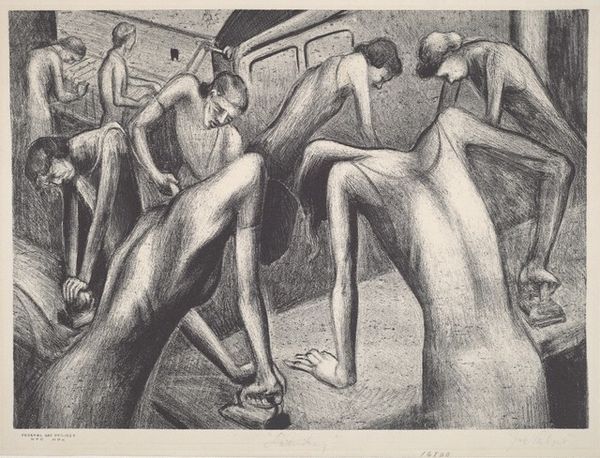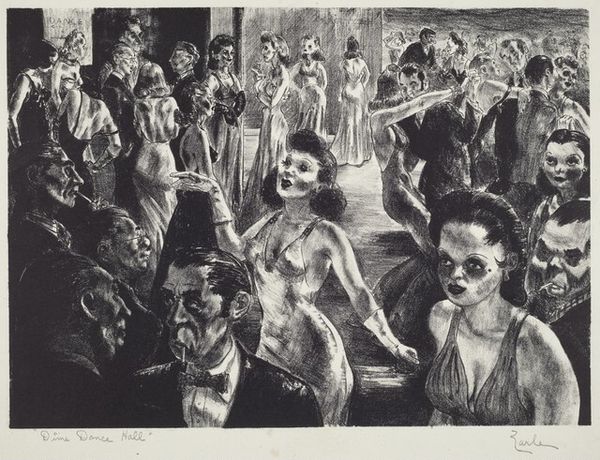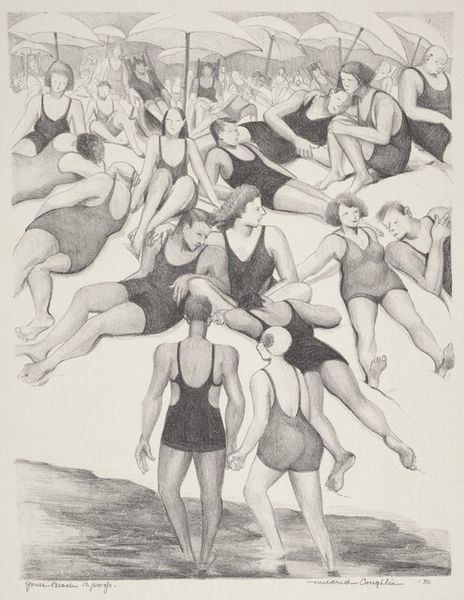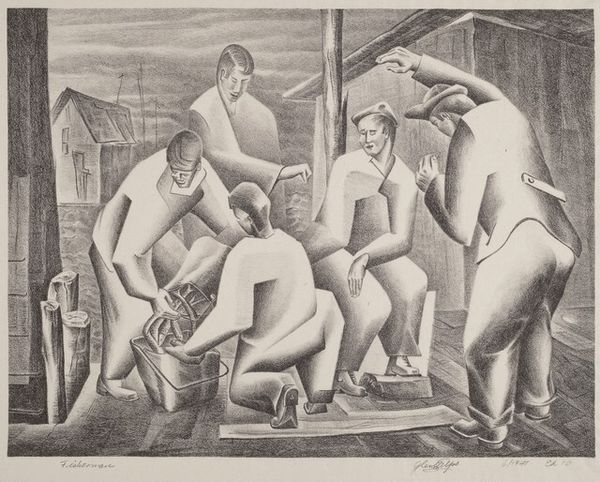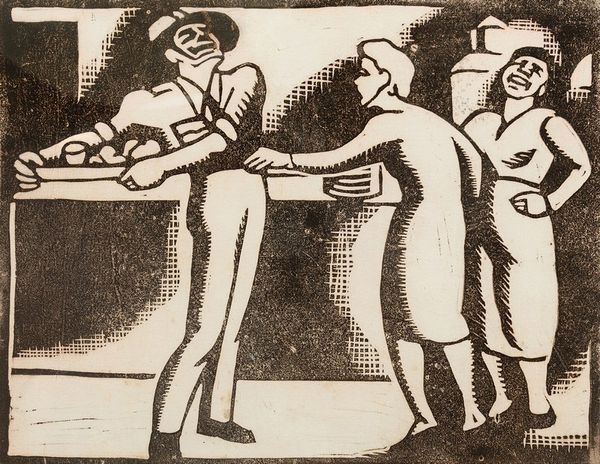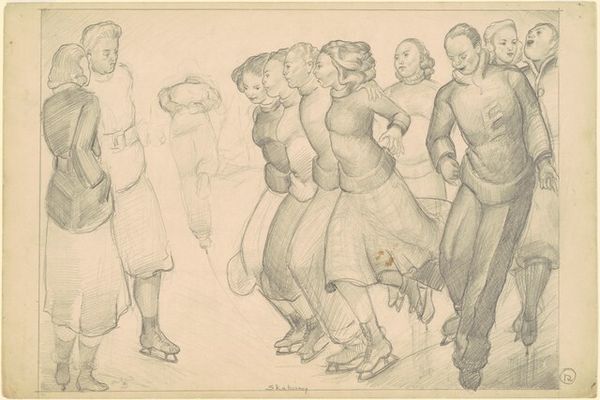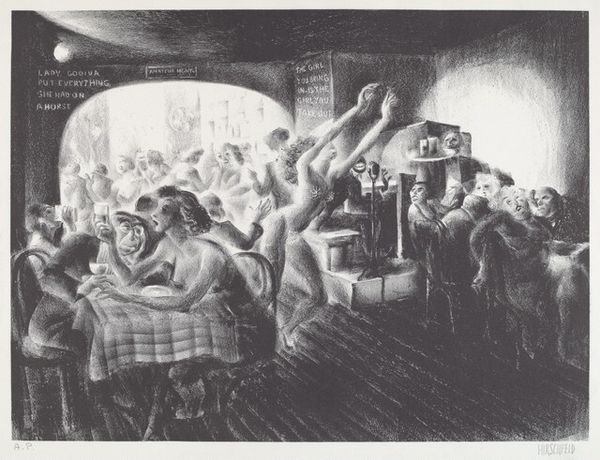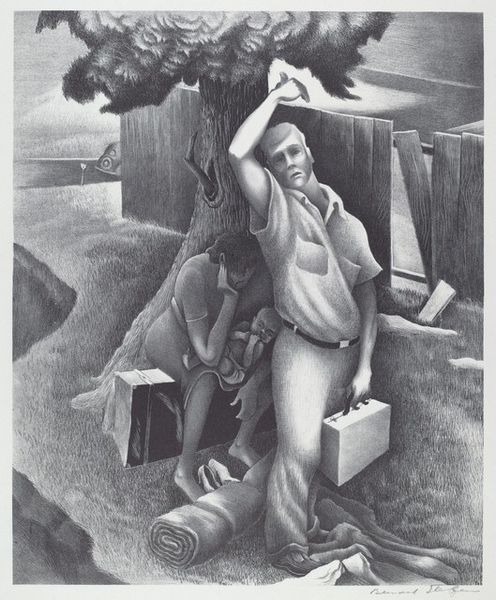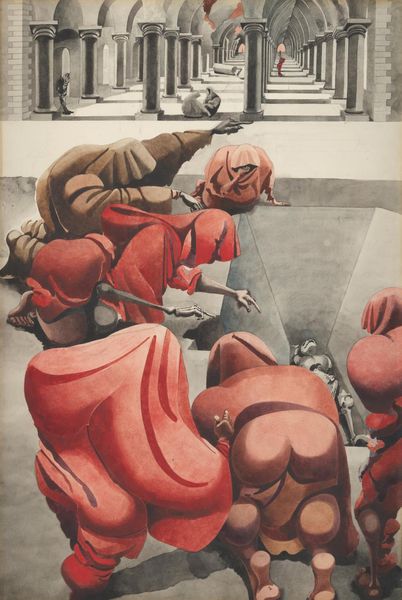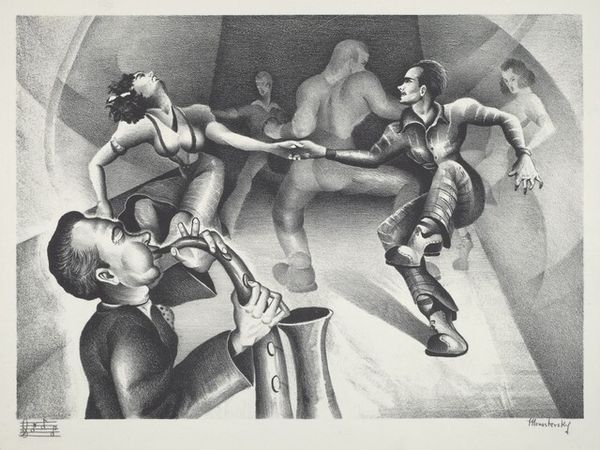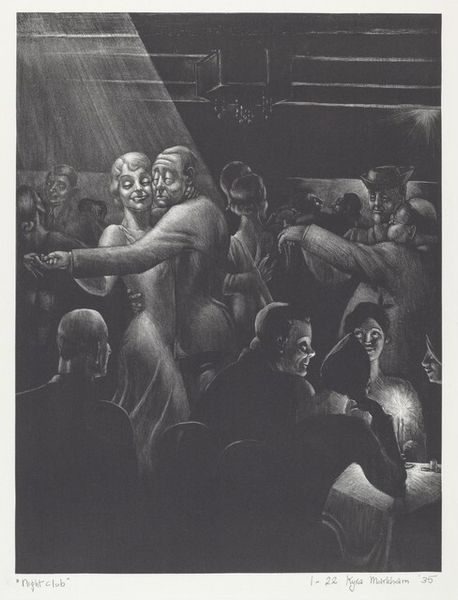
drawing, print, pencil
#
drawing
# print
#
pencil sketch
#
landscape
#
charcoal drawing
#
figuration
#
pencil drawing
#
pencil
#
portrait drawing
#
genre-painting
#
realism
Dimensions: image: 260 x 352 mm paper: 298 x 406 mm
Copyright: National Gallery of Art: CC0 1.0
Curator: Here we have Alice Harold Murphy's "March of Summer" from 1937, a work rendered in pencil that combines figuration with a seaside landscape. Editor: It's an arresting scene. The stark light and heavy shadows give it a sort of pensive, almost melancholic, feeling, despite the seaside setting usually being associated with leisure and joy. The lack of direct sunlight contributes to the somber mood, highlighting the figures' isolation despite their proximity. Curator: Absolutely, the grayscale palette lends a certain timeless quality, and yet, when viewed through the lens of the late 1930s, on the cusp of World War II, those somber tones seem almost prophetic of looming anxieties. Figures clustered yet disconnected recall similar social tensions found across regionalist prints from the Depression era. Editor: And notice the clothing of the women, particularly how they all seem uniform, modest, reflecting a certain restraint. Their bare feet suggest an attempt at casualness, yet the dark dresses disrupt that impression. One carries a small child. This tension speaks to me of the expectations placed on women, the roles they must inhabit. Curator: I'm drawn to how the artist places a sort of dreamlike, compressed version of a shore way in the background. These receding tiny figures are fascinating. As such, there is almost an ancestral callback occurring as similar genre scenes come to my mind when looking at its spatial organization, the "march" towards Summer may well reflect seasonal traditions of communities living close to nature. The sailboats on the sea reinforce a cultural continuity tied to the location, perhaps speaking to memories linked to those who traversed such seas over generations. Editor: It's an intriguing blend. A sense of communal continuity through landscape, yes, but also perhaps a visual assertion of limited choices during this moment in time—the summer representing a temporary, fleeting solace from the tensions that underscore their existence, be it societal pressure on women or looming war in the coming years. Curator: "Fleeting solace"... I appreciate how that phrasing brings it into sharper focus, highlighting those possible deeper tensions present underneath a deceptively straightforward genre painting of a group by the beach. Editor: Indeed, looking more deeply into the scene brings one in contact with complex symbolic relationships within simple realities of place and belonging.
Comments
No comments
Be the first to comment and join the conversation on the ultimate creative platform.
